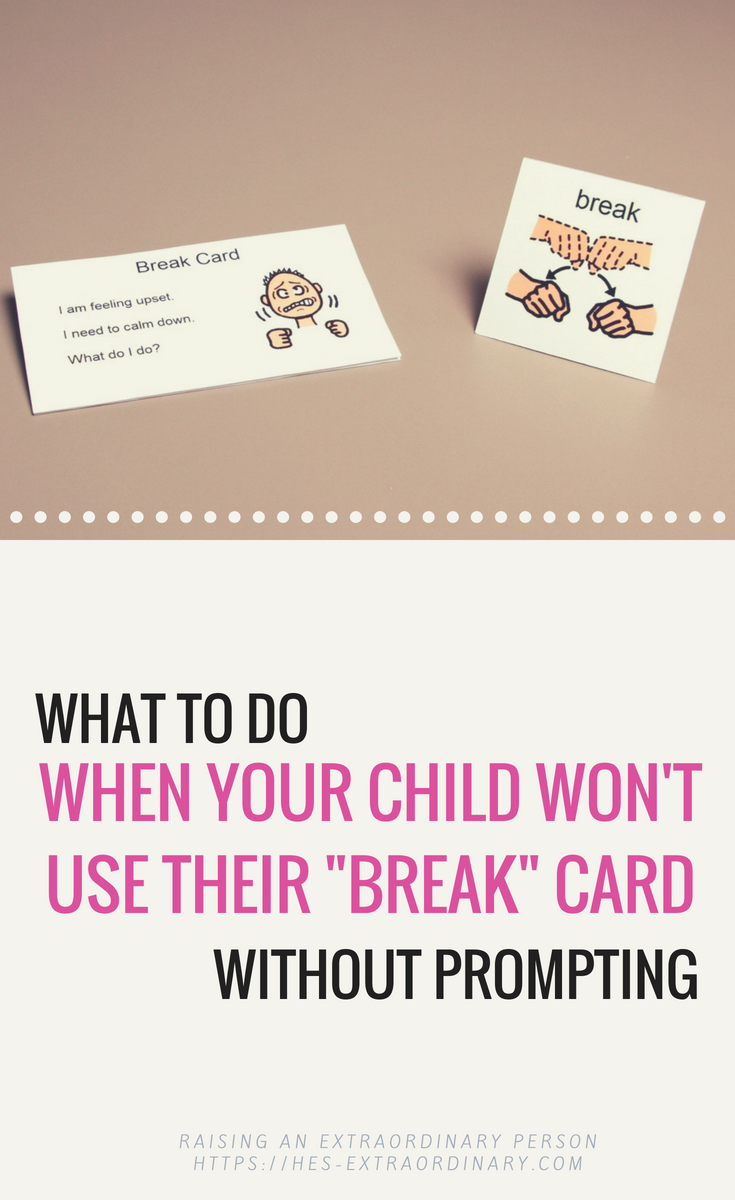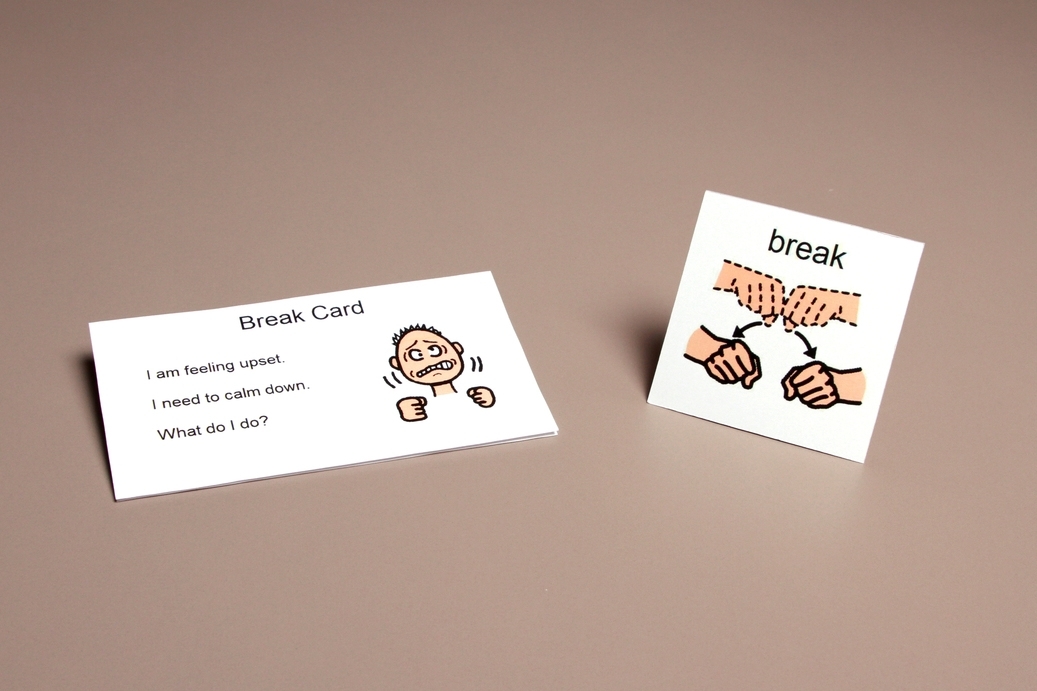What To Do When Your Child Won’t Use Their Break Card
Does your child have a “break” card at school that is meant to be used as a visual way to communicate when they’re feeling frustrated and need time away from the classroom?
Have they ever actually used the “break” card to let their teacher or aid know they need a break without being prompted or guided first?
When Your Child Won’t Use Their Break Card, What do You Do?
When is a break card used?
Break cards are used when working with students who often get frustrated, anxious, or overwhelmed. They are for kids who need to take breaks from tasks or the classroom to help them stay calm and regulated.
Depending on the individual child’s communication abilities, the break card may be used on its own or as a component of a larger symbol communication system.
How is a break card used?
Generally, a child uses their break card in one of the following ways:
Teaching how to use the break card
Before any child is given the break card, it’s important to teach them how to use it.
It should be explained to your child “This is your break card. You can use it to tell me any time you need a break”.
Then when your child starts showing any signs they’re frustrated, the teacher can say “You seem upset, use your break card to tell me you need a break”.
Your child should be given a break immediately upon asking for one. It’s important to build an association that asking for a break = break, not behavior = break.
The Problem With The Break Card
There’s one basic problem with break cards that makes is so hard to get kids to use them. Even with teaching and prompts, it’s challenging for kids to use their break cards on their own.
In a perfect world, you’d want your child to let their teacher know they need a break at the earliest sign of frustration.
Then they’d go for a break before any behaviors or outbursts happen. Imagine them using the card proactively and avoiding meltdowns.
Related: The Ultimate Guide to Preventing Meltdowns
This is an unrealistic expectation and the reason why is because of all the steps involved in the cognitive process of a child recognizing they need a break and then asking for it.
The Process
Think about this, before your child can ask for a break, all of the following needs to happen:
- Your child has a problem – this could be environmental, internal (hunger, pain, etc), sensory (too loud, too many people), not understanding the task, etc.
- Frustration or anxiety begins to build up and reaches a point that your child is no longer well regulated.
- Then they recognize the cues inside their body that this is happening.
- Your child then realizes – through problem-solving skills – that in order to return to a state of self-regulation they need to leave their current environment. They must know they need to take a break to solve this problem.
- Next, they need to process in their mind what the correct way is to ask for this break.
- They must then initiate a social interaction with their teacher or aid. This is something that causes extreme anxiety in individuals with autism (and often just kids in general).
- Your child will then need to get the teacher’s attention and take all of the above information from their working memory to communicate it using the break card. Note: this may make them feel vulnerable because they’re now admitting to someone else that they don’t understand or are wrong – something some adults aren’t even able to do.
- Your child is taken for a break.
In order to use a break card, your child is expected to do all of the above while they’re upset. Studies show that cognitive ability drops by about 30% when an individual is upset.
So even if this is something your child would normally be able to do, they may not be able to do it while feeling upset.
What ends up happening?
What ends up happening instead of the process outlined above? Well, usually around step 2 behaviors start and may even escalate quickly and anxiety continues to increase. Now your child doesn’t feel comfortable (or can’t) verbalize or communicate how they’re feeling.
Related: 115+ Self-Regulation Strategies for Toddlers to Teens
Sometime after this point, their teacher will prompt them by saying “You seem upset, you can ask for a break with your card”.
This scenario is still reinforcing that behavior = break, or that behavior gets them out of a stressful environment. This isn’t the goal – and the more times this happens the stronger the association between the two will be.
Instead of a break card, try this
Consider making an “I have a problem” card and using it instead of or combined with their “I need a break” card.
Having a problem is the first step in the process of asking for a break. Your child has a problem before they’re in such a state of dysregulation that they need to take a break.
It will be easier for them to communicate their problems simply because they aren’t as upset. Also, their teacher can prompt them the moment they aren’t doing what is expected – before any inappropriate behavior occurs.
How to use a problem card
A problem card is used the same way as a break card. The student can signal the teacher in the same way and it can be used alone or as part of a communication system.
When the student isn’t doing what is expected, they can be prompted right away. For example: “I see you aren’t doing your work, do you have a problem?” and presenting them with the problem card.
You’ll now have the opportunity to determine what the problem is, and also work on building problem-solving skills.
You can suggest a break as one of the ways to help with their problem. Also, when you determine the problem early enough you may be able to avoid the break by offering other solutions.
If they are hungry, offer a snack. If they didn’t understand the instructions, break them down into smaller steps. Headphones can be offered if the classroom is too loud.
You’re no longer reinforcing that behavior = break. Instead, your focus is on teaching them how to ask for help when they have a problem and how to find solutions to their problems.


